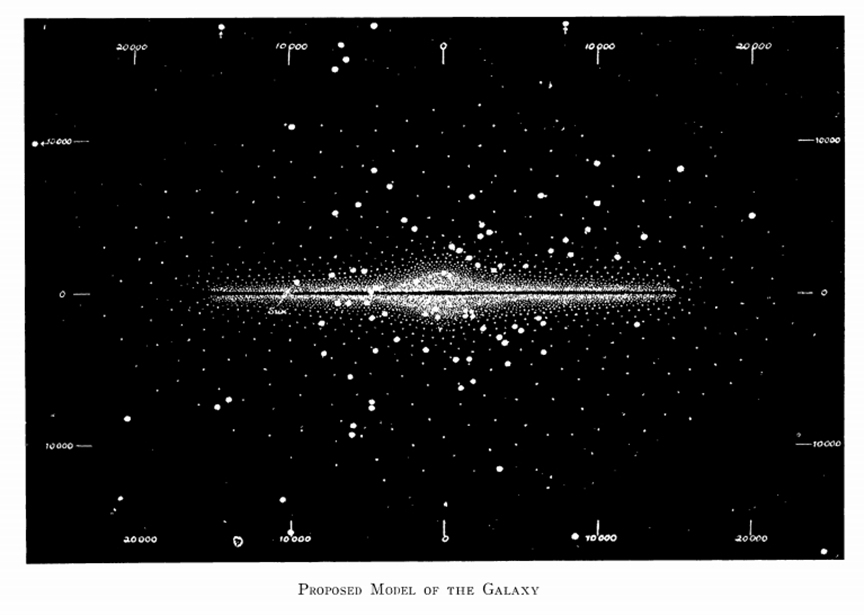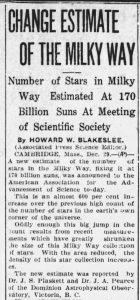Later Scientific Accomplishments
Big questions in astronomy during the 1920s included the nature of our own Milky Way Galaxy. Basic facts, such as the size and mass of the galaxy, and whether it rotated, were not yet understood. Astronomers had made estimates of the size of the Milky Way and the location of the sun within it, but they were very uncertain. In 1927, a Dutch astronomer named Jan Oort determined a way to measure the Milky Way rotation using data on the motion of stars close to the sun.
This discovery piqued the interest of John Stanley Plaskett and his colleague, Joseph Algernon Pearce. They had just the kind of data needed to apply Oort’s method and measure the motion of the Milky Way. Over several years they had obtained spectra of O and B stars, which are the hottest and most intrinsically bright stars. They had measured the motions towards or away from us, called radial velocity, of several hundred of these stars. It took months of painstaking calculations to analyze the data and get the results. Remember, this was done before computers or electronic calculators!
Plaskett and Pearce proved for the first time that the Milky Way rotated and that the sun rotated around the centre of the Milky Way. They also measured the size and mass of the Milky Way and located the sun’s position. The numbers they determined for the mass and size are not that different from the values determined today by astronomers. The picture below shows their model of the Milky Way.

A diagram showing the model of the Milky Way Galaxy as proposed by Plaskett. The bright points represent the globular clusters around the Milky Way. Each of these clusters contains hundreds of thousands of stars. Note how they are centred on the centre of the Milky Way.
The bright dots above and below the galaxy are called globular clusters, which were studied intensely at the observatory in later years. These compact, spherical clusters may contain 100,000 or more stars, and have turned out to be clues to the early evolution of the galaxy.

Plaskett’s and Pearce’s work was reported worldwide. They had determined the size, mass, and rotation of the Milky Way. They also located the position of our Solar System – about 32,000 light-years from the centre of the Milky Way.
Plaskett and Pearce’s discovery was covered by newspapers all over the world. Newspaper articles often focused on the new number of stars in the Milky Way. Plaskett had once again drawn the world’s attention to Canada, Victoria, and the observatory.
Allan Sandage, an outstanding astronomer of the 20th century, wrote seventy years later that Plaskett and Pearce’s paper on their discovery “remains a treasure of astronomical literature.” A review of 20th century astronomy commented that Plaskett’s diagram of the Milky Way is “essentially the one we still sketch in introductory courses.” Plaskett’s obituary in the New York Times noted, he “gave the world its most accurate information on the rotation of the Galaxy.”

